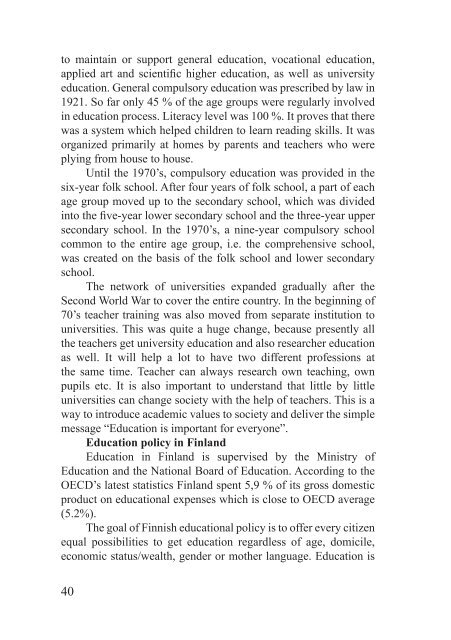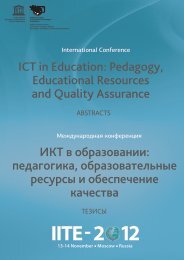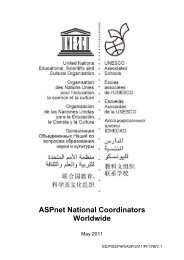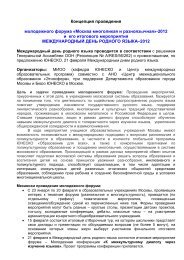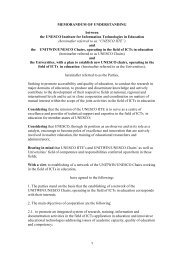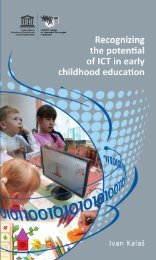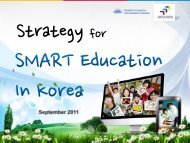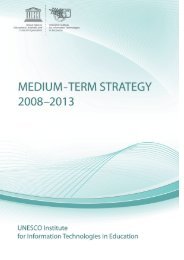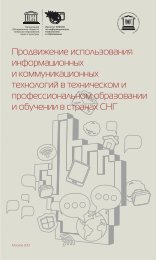ИКТ и качество образования: Ассоциированные ... - unesco iite
ИКТ и качество образования: Ассоциированные ... - unesco iite
ИКТ и качество образования: Ассоциированные ... - unesco iite
You also want an ePaper? Increase the reach of your titles
YUMPU automatically turns print PDFs into web optimized ePapers that Google loves.
to maintain or support general education, vocational education,<br />
applied art and scientific higher education, as well as university<br />
education. General compulsory education was prescribed by law in<br />
1921. So far only 45 % of the age groups were regularly involved<br />
in education process. Literacy level was 100 %. It proves that there<br />
was a system which helped children to learn reading skills. It was<br />
organized primarily at homes by parents and teachers who were<br />
plying from house to house.<br />
Until the 1970’s, compulsory education was provided in the<br />
six-year folk school. After four years of folk school, a part of each<br />
age group moved up to the secondary school, which was divided<br />
into the five-year lower secondary school and the three-year upper<br />
secondary school. In the 1970’s, a nine-year compulsory school<br />
common to the entire age group, i.e. the comprehensive school,<br />
was created on the basis of the folk school and lower secondary<br />
school.<br />
The network of universities expanded gradually after the<br />
Second World War to cover the entire country. In the beginning of<br />
70’s teacher training was also moved from separate institution to<br />
universities. This was quite a huge change, because presently all<br />
the teachers get university education and also researcher education<br />
as well. It will help a lot to have two different professions at<br />
the same time. Teacher can always research own teaching, own<br />
pupils etc. It is also important to understand that little by little<br />
universities can change society with the help of teachers. This is a<br />
way to introduce academic values to society and deliver the simple<br />
message “Education is important for everyone”.<br />
Education policy in Finland<br />
Education in inland is supervised by the Ministry of<br />
Education and the National Board of Education. According to the<br />
OECD’s latest statistics inland spent 5,9 % of its gross domestic<br />
product on educational expenses which is close to OECD average<br />
(5.2%).<br />
The goal of innish educational policy is to offer every citizen<br />
equal possibilities to get education regardless of age, domicile,<br />
economic status/wealth, gender or mother language. Education is<br />
40


